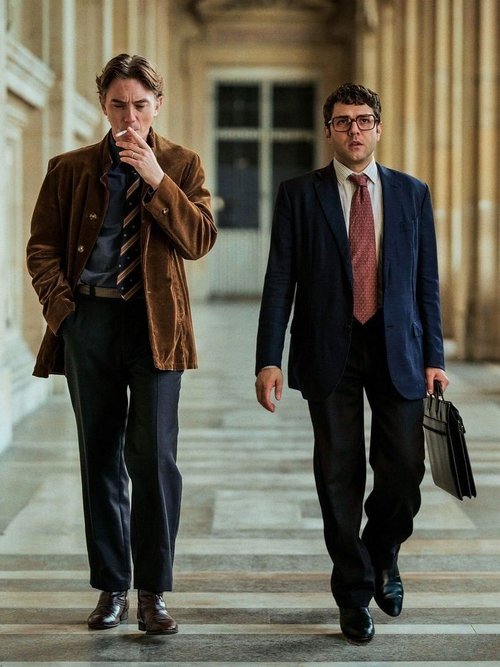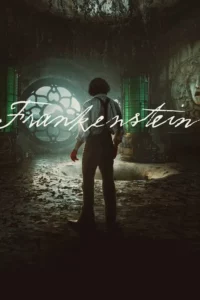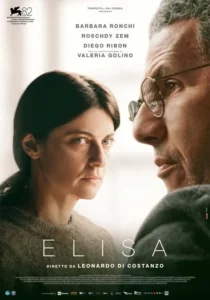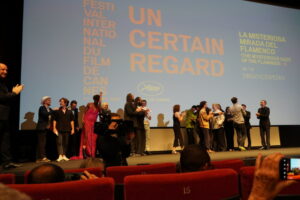Last updated on June 9, 2025
A film by Stéphane Demoustier
With: Claes Bang, Sidse Babett Knudsen, Swann Arlaud, Michel Fau, Xavier Dolan, Alessandro Bressanello, Viilbjørk Malling Agger, Pierre-François Grunewald
1983. The biggest architectural competition in history, both anonymous and open, is launched under the impetus of a new socialist president, François Mitterrand. Coveted by all the biggest international architectural firms, the competition is surprisingly won by an unknown: Johan Otto von Spreckelsen, an architecture teacher from Copenhagen. Until then, the fifty-year-old Danish had only built 4 buildings: his home and three small chapels.
Our rate: **
Stéphane Demoustier takes a risky gamble, after Borgo, with a decidedly different project, with obvious mirror effects, on several levels of interpretation. The first level of interpretation, the most obvious, consists of focusing on the film’s various thematic components, namely architecture, French policy on architecture, the right-left schism on the priority to be given to the beauty of monuments, but also, and above all, the highly improbable nature of seeing an illustrious unknown, a potential impostor, win a competition of the highest rank, and the incongruous, even facetious situation that this engenders. Demoustier gives us a story that has to deal with two opposing tones, which is always tricky. There’s a surprised, amused tone that will make viewers smile in scenes where the comedy of the situation comes naturally, especially in the special relationship between Otto von Spreckelsen and his main sponsor, François Mitterrand, while the team in charge of the support (we’ll call it the project management, starting with this character played with some talent by Xavier Dolan) is concerned about the artist-architect’s lack of social skills, but also a much more realistic, much more serious tone, to say things to the viewer, to deliver a point of view on subjects that have fascinated Demoustier since his first cinematic attempts. Some critics, perhaps for convenience, like to draw a parallel between The Great Arch and The Brutalist, probably the same ones who referred to the latter as a monumental film. If this comparison is of any interest at all, which we refute, let us say that the former obeys a very different artistic intention, and, in particular, that it in no way seeks to subjugate the viewer through excess, but rather seeks above all to seduce through its balance, attention to detail, style, and rhythm, while drawing on an unusual, little-known, and somewhat forgotten story, even though the “Grande Arche de la Défense” captures the attention of many passersby, who still wonder today about its function and architectural value. On a superficial level, therefore, Stéphane Demoustier entertains and attempts to engage the viewer with his subject matter, while conveying a subtle political message that is far removed from polemic or activism. To this end, he surrounds himself with a coherent cast, each member of which, through their role, manages to highlight differences in points of view, sensibilities, and interests.
A second, less obvious interpretation, and in our view a much more interesting one, would be that Demoustier is subtly hiding his hand here, much like Trần Anh Hùng‘s film (The Pot-Au-Feu), which may have been about cooking, but was just as much about France, and above all about cinema. Thus, architecture, without being a pretext, could serve as a vehicle to evoke the joys and specificities of the film industry, the relationship between artist and technique, collective creation, and the politics of auteurs confronted with the imperatives of economic profitability and the sometimes diametrically opposed desires of directors, technicians, and producers. This hypothesis will motivate the first question in our exchange with the director of Borgo, on the heights of the Festival Palace (see below). In the subtext, therefore, there are certain clues pointing in this direction, such as the fact that the lead role was given to Claes Bang, who made his name in The Square. The cinematic gesture proposed with The Great Arch could be more clever, more provocative (precisely as The Square can be) and, above all, more intellectual and intimate than it appears, resembling a profession of faith that depicts the other side of the set, like Truffaut‘s Day for night. It could also be to Demoustier what Irma Vep is to Assayas, a confrontation between two passions that drive him. From this perspective, one question gnaws at us: is the result close to what the French director imagined, or, as was the case with The Great Arch, did the project suffer from compromises, budget cuts, or did it come up against a reality principle, resulting in something in between?













Be First to Comment